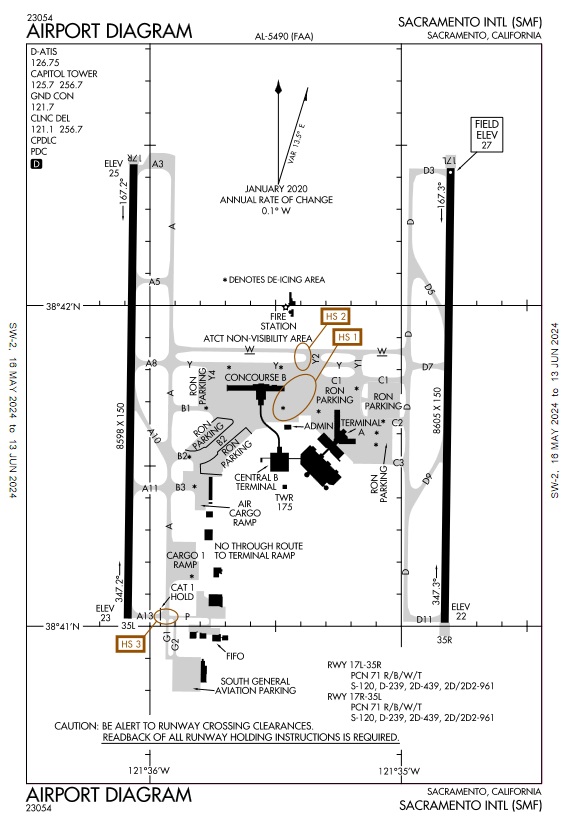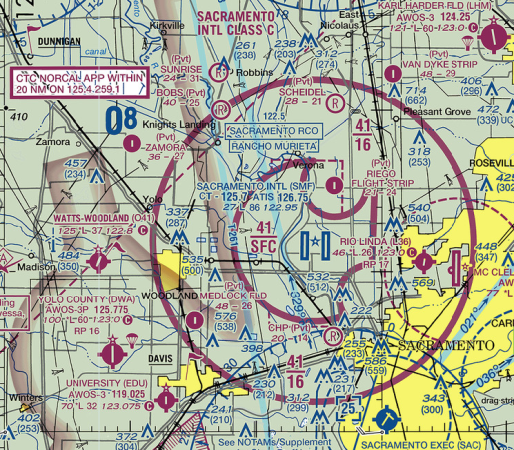Welcome to the Sacramento International Airport SOP.
This manual provides guidelines for the control of air traffic at the Sacramento International Airport. All air traffic personnel are required to be familiar with its contents. These procedures supplement the Air Traffic Control Handbook, Order 7110.65. If you encounter a situation not covered in this manual, utilize your best judgment and bring the situation to the attention of the ARTCC Chief.
- ICAO: KSMF
- Airspace: Class C
- TRACON: NorCal TRACON
- Field Elevation: 27 ft
The following links provide information relating to the Sacramento International Airport. This includes, but is not limited to:
- Airport Diagram, SIDs, STARs, IAPs
- Information from the Airport/Facility Directory
- Sectional Charts, Low- and High Altitude Enroute IFR charts
- Routing of aircraft as can be derived from real world flights
Links:
Control positions
| Position | Frequency | FRA |
|---|---|---|
| KSMF_DEL | 121.100 MHz |  |
¶ IFR departures
Aircraft departing Sacramento International Airport IFR shall be assigned a SID and, if applicable, a transition. The initial altitude for all IFR departures shall be 3 000 ft.
| SID | Transition | Aircraft type | Departure runways |
|---|---|---|---|
| FROGO# | radar vectors | All | All |
| FTHIL# RNAV | FRA | All | All |
| RVRCT# RNAV | MACUS, RALEY, SHUFL | All | 35L, 35R |
| SCTWN# RNAV | MACUS, RALEY, SHUFL | All | 17L, 17R |
Control positions
| Position | Frequency | FRA |
|---|---|---|
| KSMF_GND | 121.700 MHz |  |
¶ Jurisdiction
Capitol Ground is responsible for traffic movement on all taxiways.
Airport Diagram

¶ Airport Terminal & Airline Parking Information
Terminal A
- Air Canada
- American Airlines
- Delta Air Lines
- United Airlines
Concourse B
- Aeromexico
- Alaska Airlines
- Frontier Airlines
- Hawaiian Airlines
- Horizon Air
- JetBlue Airways
- Southwest Airlines
- Spirit Airlines
- Volaris
Control positions
| Position | Frequency | FRA |
|---|---|---|
| KSMF_TWR | 125.700 MHz |  |
Airport
¶ Airspace and Jurisdiction
Local Control owns all active runways. The airspace ceiling is 2000ft MSL within the class C surface area depicted on the chart below. The Local Control position at the Sacramento International Airport cannot be split.
